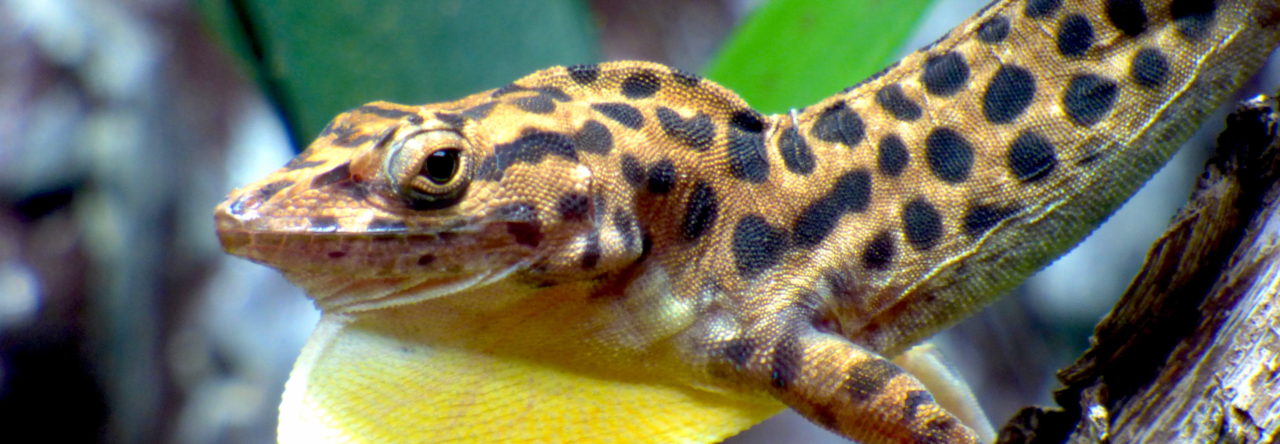
Anolis mariarum from https://www.facebook.com/media/set/?set=a.111687092219097.16289.111684688886004&type=1
Brian Bock and colleagues, most at the Universidad de Antioquia in Medellin, Colombia, have published a series of papers on two populations of the high elevation anole, Anolis mariarum. The most recent in this series, just out in the journal Caldasia, is an examination of the reproductive cycle of this species.
In Central America, many anoles that occur in areas with a single long dry season curtail their reproduction during the dry times. However, A. mariarum occurs in areas where there are two wet and two dry seasons over the course of the year, and this species breeds year round, as does another highland anole in a similar place climatically, A. (Phenacosaurus) heterodermus. The authors suggest that because each of the dry times are shorter than one long dry season, these species are able to continue breeding. But, as the authors note, a confounding factor is that these two species occur at very high elevations (> 2200 meters), where temperatures are much cooler than most species that have been studied. Despite a considerable amount of work on anole reproductive phenology, there is still much to learn.
- Evolution in Real Time on Lizard Island - March 23, 2025
- Spider Snags Adult Anolis osa - March 22, 2025
- An Homage to the Green Anoles of New Orleans - March 21, 2025


1 Pingback